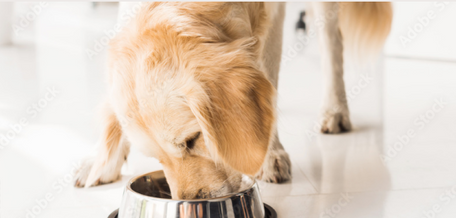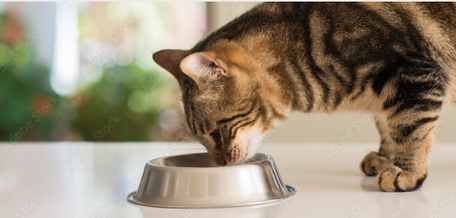More pet parents are turning to a raw meat diet for dogs, inspired by the idea of feeding their furry friends the way nature intended. This fresh-food approach has gained popularity for its simplicity, nutrient density, and real-food appeal. But with that popularity comes confusion, especially when it comes to safety, recipe balance, and how to make the switch without upsetting your dog’s digestion.
This guide breaks it all down, from food safety and balanced recipes to a 7-day transition plan. Learn how to feed raw safely, avoid common mistakes, and support your pup’s health every step of the way.
Key Takeaways
-
A raw meat diet for dogs includes fresh meat, bones, and organs, not just pre-packaged raw patties.
-
Always follow guidelines for temperature and cleanliness when handling raw meat.
-
Aim for a mix of 80% muscle meat, 10% organ meat, and 10% bones.
-
Transitioning to a raw diet should be gradual, increasing raw food in your dog's meals over a week.
-
Consider adding supplements like fish oil for extra health benefits.
What Exactly Is a Raw Meat Diet?
The raw meat diet for dogs consists of uncooked animal products typically muscle meat, organ meat, and edible bones fed in specific ratios. It’s different from commercial “raw” dog foods that may be flash-pasteurized or lightly cooked.
What’s Typically Included:
-
Chicken, turkey, beef, lamb, rabbit, duck
-
Liver, kidney, spleen especially nutrient-rich
-
Chicken wings, duck necks, turkey tails
-
You can also add eggs, small amounts of vegetables, raw fish
Many pet parents say they notice benefits like shinier coats, firmer stools, fresher breath, and better energy. However, these claims are based on anecdotal evidence and results vary.
Raw Meat Dog Food Safety Checklist
If you're feeding dogs raw meat, food safety should always come first. Here’s a checklist to help keep the harmful bacteria away.
Must-Follow Raw Meat Handling Guidelines:
-
Refrigeration is key: Keep raw meat below 40°F (4.4°C) at all times. Refer to the USDA Safe Temperature Chart.
-
Thaw correctly: Always thaw meat in the refrigerator and never on the counter
-
Avoid cross-contamination: Use separate cutting boards for raw meat and disinfect countertops, knives, and storage containers after use
-
Limit exposure: Don’t leave raw meat out for more than 30 minutes. Store unused portions in airtight containers or vacuum-sealed bags
-
Wash hands thoroughly after each step
These raw meat dog food safety steps are important for protecting your pup and your household.
Balanced Recipe Ratios: The 80/10/10 Raw Diet
To keep your dog’s meals nutritionally balanced, many raw feeders use the 80/10/10 model:
|
Component |
Percentage |
Example for 40-lb Dog (Daily) |
|
Muscle Meat |
80% |
~1.6 lbs |
|
10% |
~0.2 lbs (half liver, half other) |
|
|
Raw Edible Bone |
10% |
~0.2 lbs (chicken wing, duck neck) |
Sample Day Menu for a 40-lb Dog:
-
1.2 lbs boneless chicken thighs
-
0.2 lbs chicken wing
-
0.1 lbs beef liver
-
0.1 lbs pork kidney
-
1 raw quail egg (optional)
Adjust portions based on your dog’s age, activity level, and health status. Dogs with special conditions (e.g. kidney issues) may require customized meals.
Where to Source High-Quality Raw Meat
Sourcing quality meat is one of the most important parts of feeding raw.
Best Places to Buy:
-
Local butchers: Often offer human-grade cuts and organ meats
-
Online raw pet food suppliers: Convenient and usually well-balanced
-
BJ’s Raw Pet Food: Shop our pre-made raw blends for simplicity and peace of mind
When choosing meat, look for hormone-free, antibiotic-free, and human-grade whenever possible.
Preparing & Storing Raw Meals
Proper preparation and storage can help preserve nutrients and minimize bacteria.
Prep Tips:
-
Pre-portion meals for 2–3 days at a time
-
Use a digital kitchen scale to get accurate ratios
-
Keep organ meat frozen until the day it’s used
Storage Tips:
-
Vacuum-seal or store in BPA-free airtight containers
-
Label packages with dates
-
Keep raw food in the fridge for 2–3 days max; freeze the rest
Watch Out for the “Danger Zone”:
Between 40°F and 140°F is where bacteria thrive. Always stay below or cook above.
By learning how to prepare raw meat for dogs correctly, you can help support your dog’s well-being.
7-Day Raw Dog Food Transition Plan
If your dog’s used to kibble or cooked food, go slow. A sudden switch can cause digestive upset.
|
Day |
Raw Food % |
Previous Food % |
Tips |
|
1–2 |
25% |
75% |
Add goat milk or probiotics to support digestion |
|
3–4 |
50% |
50% |
Look for changes in stool or energy |
|
5–6 |
75% |
25% |
Keep meals consistent and simple |
|
7+ |
100% |
0% |
Full raw |
Digestive Support:
Try adding plain pumpkin puree, bone broth, or fermented veggies to ease the transition.
Curious about gut health? Read our post on probiotics for dogs.
Myths vs Facts: Raw Meat Diet Edition
Let’s bust some common myths about feeding dogs raw meat.
-
Myth: Raw diets are unsafe.
Fact: With proper handling and sourcing, risks can be minimized. -
Myth: Raw food makes dogs aggressive.
Fact: There’s no scientific evidence for this. Some dogs even become calmer when fed raw. -
Myth: Dogs will get parasites from raw meat.
Fact: Freezing meat properly might kill most parasites. Plus, dogs' digestive systems are naturally acidic. -
Myth: You need to add lots of veggies.
Fact: Some dogs do fine without them. Others benefit from leafy greens and carrots for fiber. -
Myth: Vets don’t approve.
Fact: Some do, especially integrative or holistic vets. While organizations like WSAVA remain cautious, many owners choose raw after careful research.
Supplements That Pair Well with Raw Meat
Even the best balanced raw dog diet might benefit from the right add-ons.
Consider:
-
Fish Oil: May support shiny coats and heart health
-
Joint Chews: Might help senior dogs maintain mobility
-
Kelp or Seaweed Powder: Natural source of trace minerals
-
Digestive Enzymes: Helpful during transition phase
-
Eggshell Powder: Calcium boost for dogs not eating bones
Quick Recap
-
A raw meat diet for dogs includes muscle meat, organ meat, and edible bones, ideally in an 80/10/10 ratio.
-
Keep meat below 40°F, clean surfaces thoroughly, and store portions properly.
-
Start with high-quality meat sources like local butchers or pre-made blends like those from BJ’s Raw Pet Food.
-
Transition slowly using a 7-day plan, increasing raw food in 25% increments.
-
Don’t fall for myths. Raw feeding can be safe and balanced when done thoughtfully.
-
Consider supplements like fish oil, joint chews, and probiotics to support overall wellness.
Feeding raw doesn’t have to be complicated. Just make sure it is consistent, clean, and balanced.
Quick Answers to Common Raw Feeding Questions
Q: What’s in a raw meat diet for dogs?
A: 80% muscle meat, 10% organ meat, 10% raw edible bone.
Q: How do you safely prepare raw meat for dogs?
A: Keep it below 40°F, avoid cross-contamination, thaw in the fridge, and discard uneaten food within 30 minutes.
Q: How do you transition a dog to a raw food diet?
A: Slowly over 7 days, increasing raw by 25% every 2 days while monitoring digestion.
Q: Where can I buy raw dog food blends?
A: Trusted online suppliers like BJ’s Raw Pet Food offer pre-made, frozen raw blends.
Conclusion:
Feeding a raw meat diet for dogs may seem intimidating, but with the right tools and approach, it becomes simple. Focus on safety, balance, and structure and you might be amazed at the changes in your pup.
Start smart. Feed raw. Stay informed. And check out our full library of resources at BJ’s Raw Pet Food.
Frequently Asked Questions
How much raw meat should I feed my dog daily?
Most adult dogs eat 2–3% of their ideal body weight in raw food per day. For example, a 40-lb dog would typically need 0.8 to 1.2 lbs of food daily.
Can I feed raw meat to puppies or senior dogs?
Yes, but with extra care.
-
Puppies need more calories and calcium, so feed about 5–8% of their body weight, split into 3–4 meals daily.
-
Senior dogs can thrive on raw, but their digestive systems may be more sensitive. Transition slowly and consider softer meats and extra joint support like fish oil or glucosamine.
Can I mix kibble and raw food in the same meal?
Many people do, but opinions vary. Some say mixing can upset digestion due to different digestion times. If your dog tolerates it well, it may be fine.
Is it safe to feed my dog raw meat?
Yes, but you need to follow safety rules like keeping everything clean and storing meat at the right temperature.
What are the benefits of feeding raw meat to dogs?
Raw diets can improve a dog's coat, energy levels, and overall health, but it’s important to ensure they get balanced nutrition.
How do I travel with raw dog food?
Traveling raw is totally doable with a little planning.
-
Pack pre-portioned frozen meals in a cooler or insulated bag with ice packs
-
Use airtight containers or vacuum-sealed bags
-
Book accommodations with a mini-fridge/freezer
-
For longer trips, consider freeze-dried or dehydrated raw food options.
Are there any supplements I should give my dog on a raw diet?
Fish oil and joint chews are great supplements to add to a raw meat diet to support your dog's health.




















